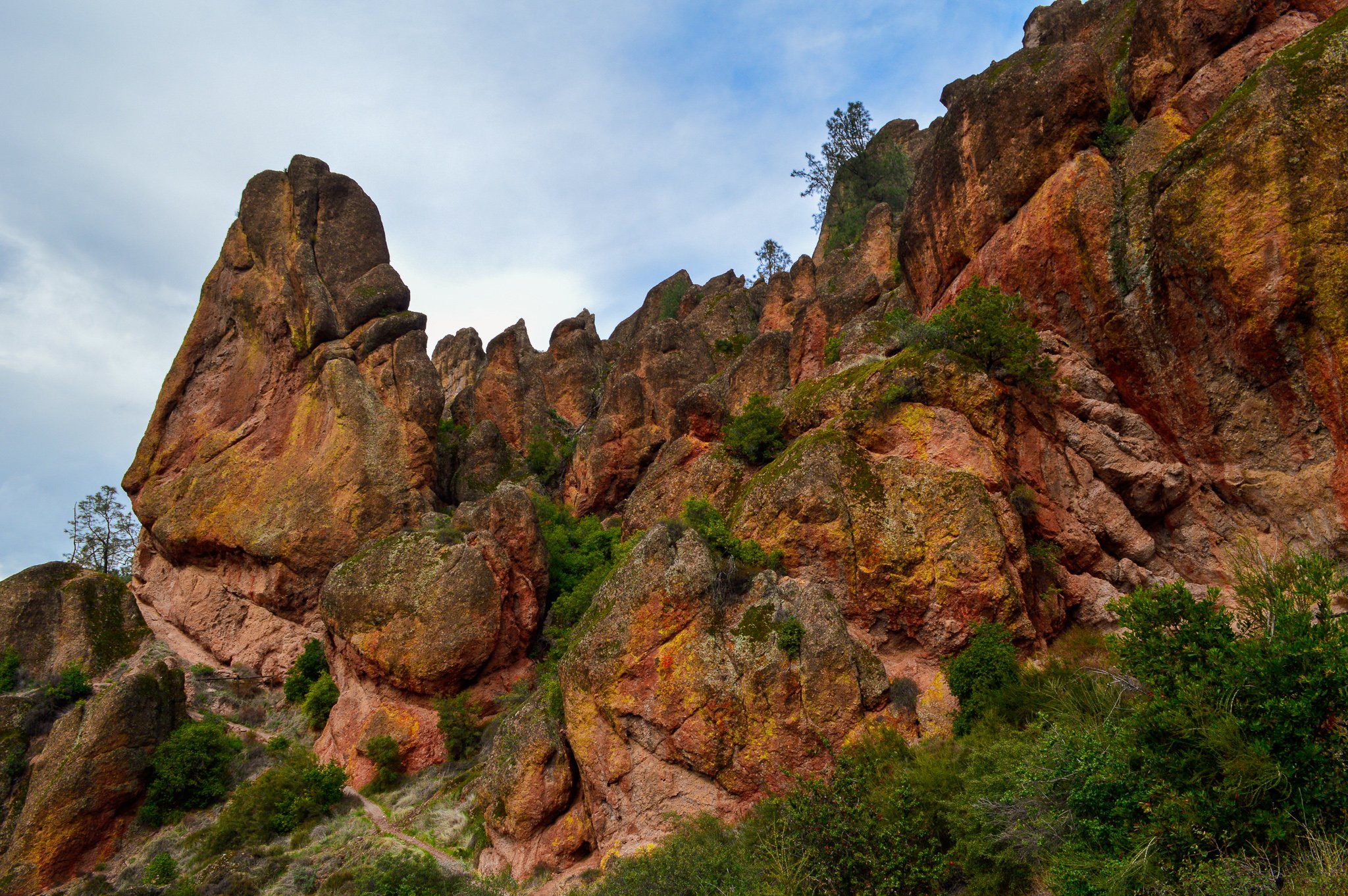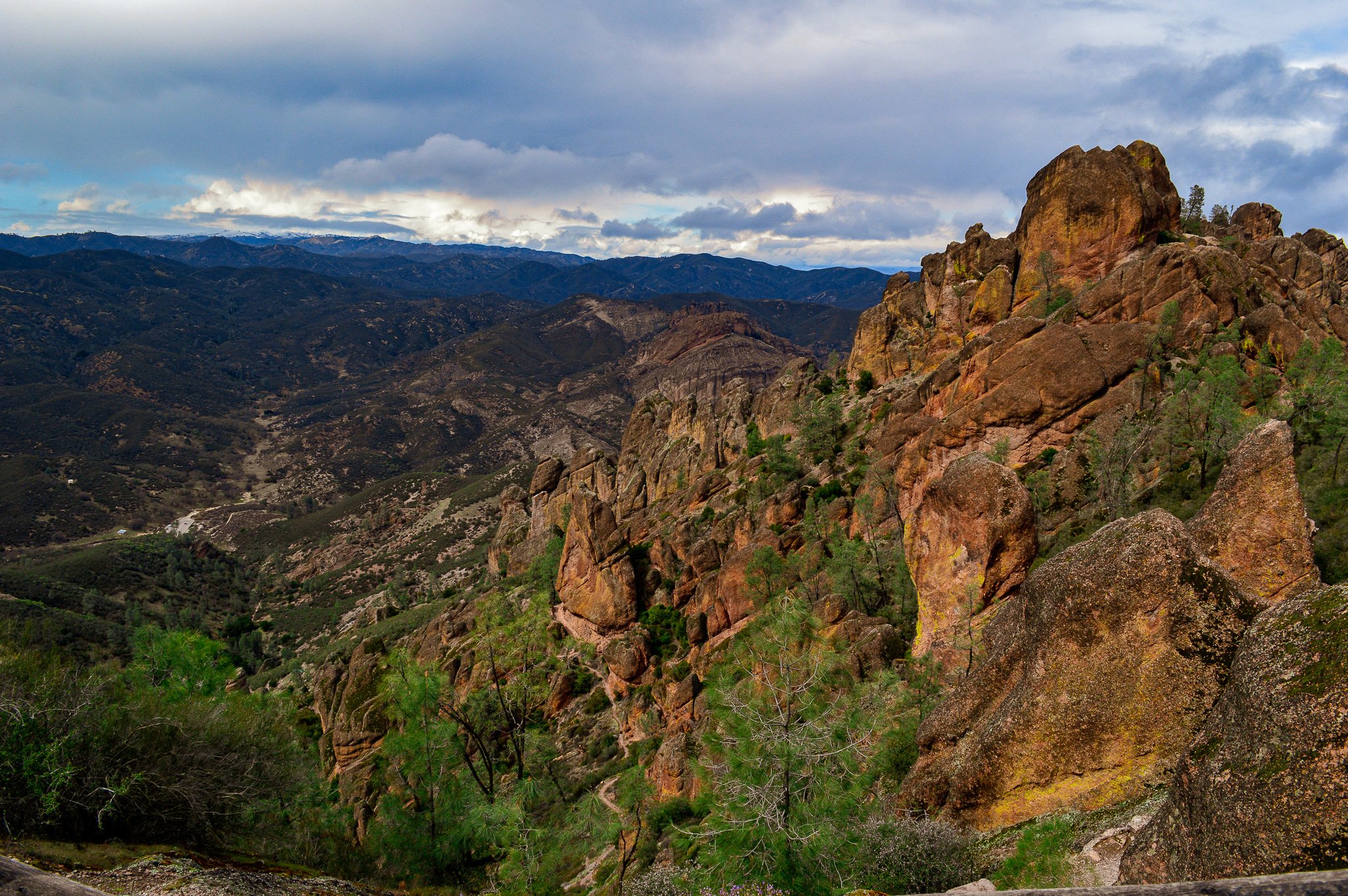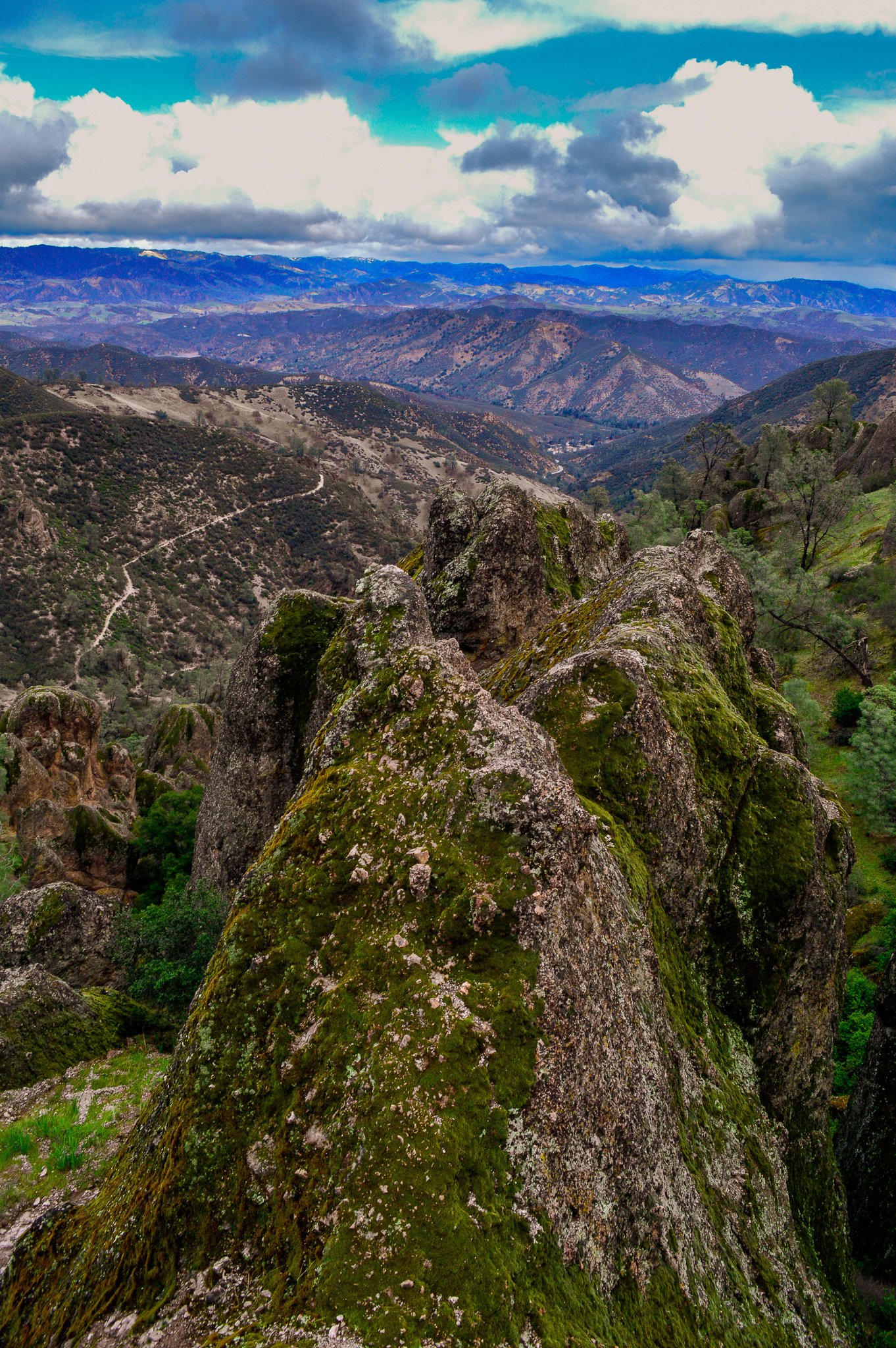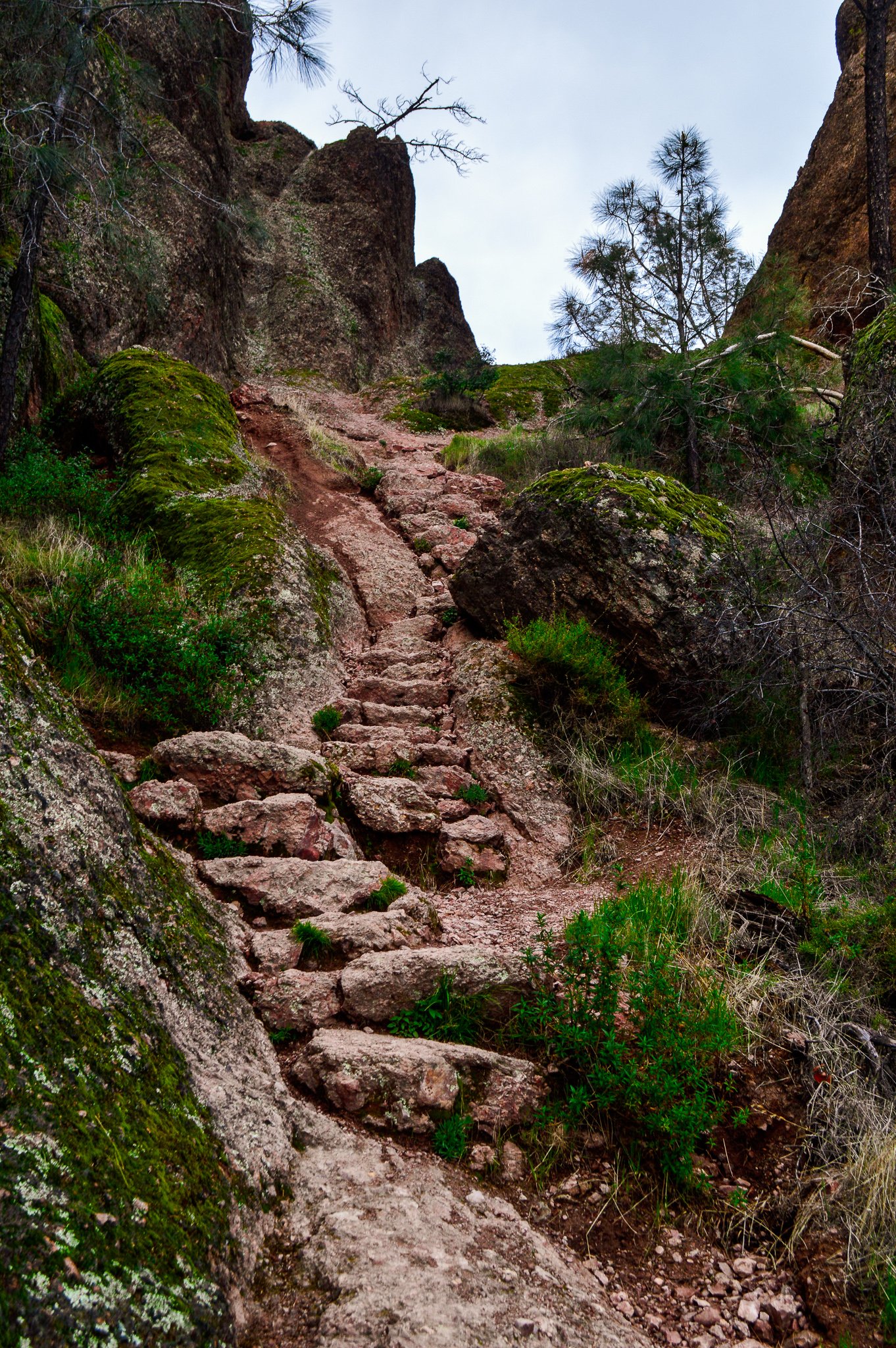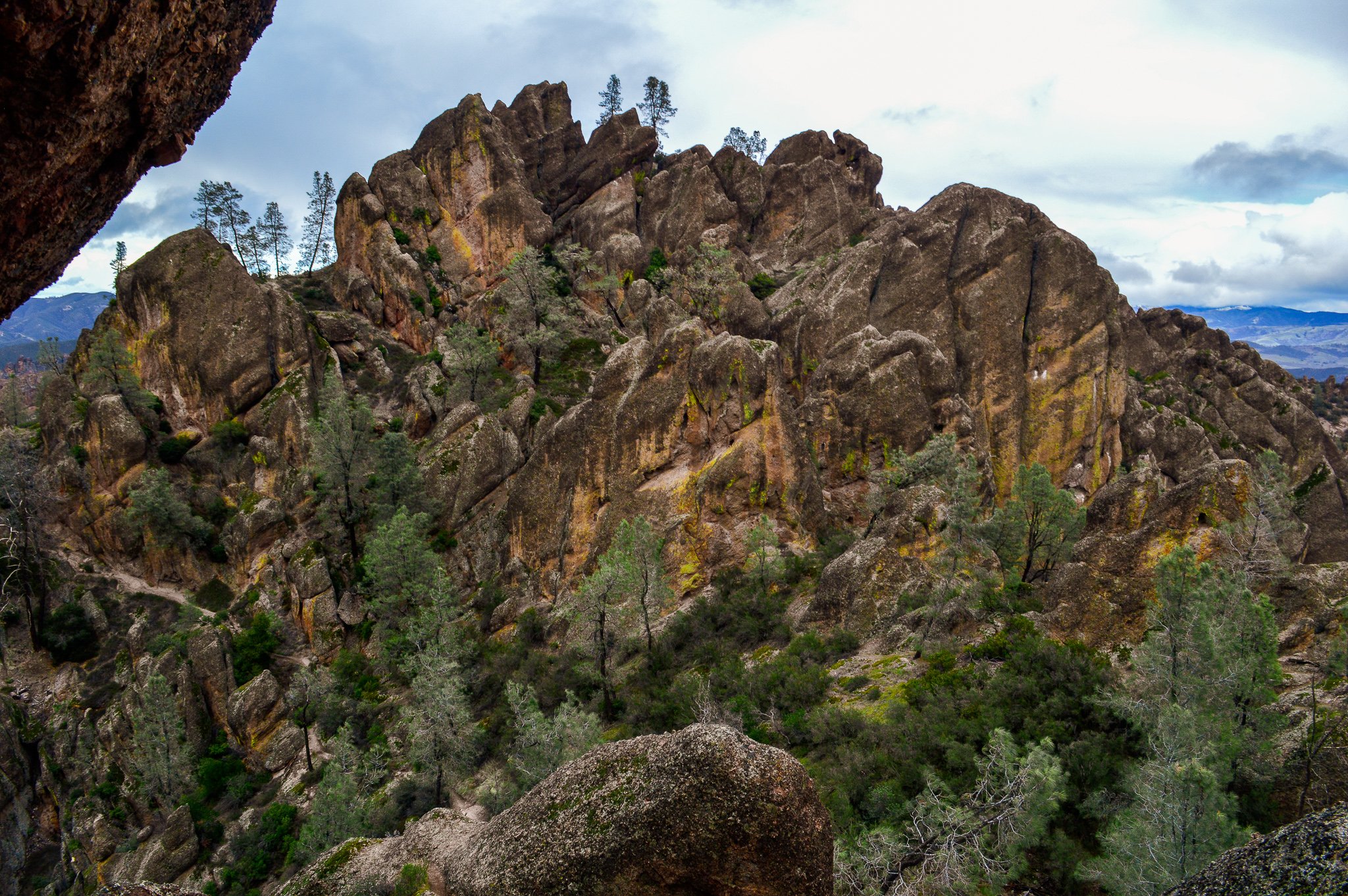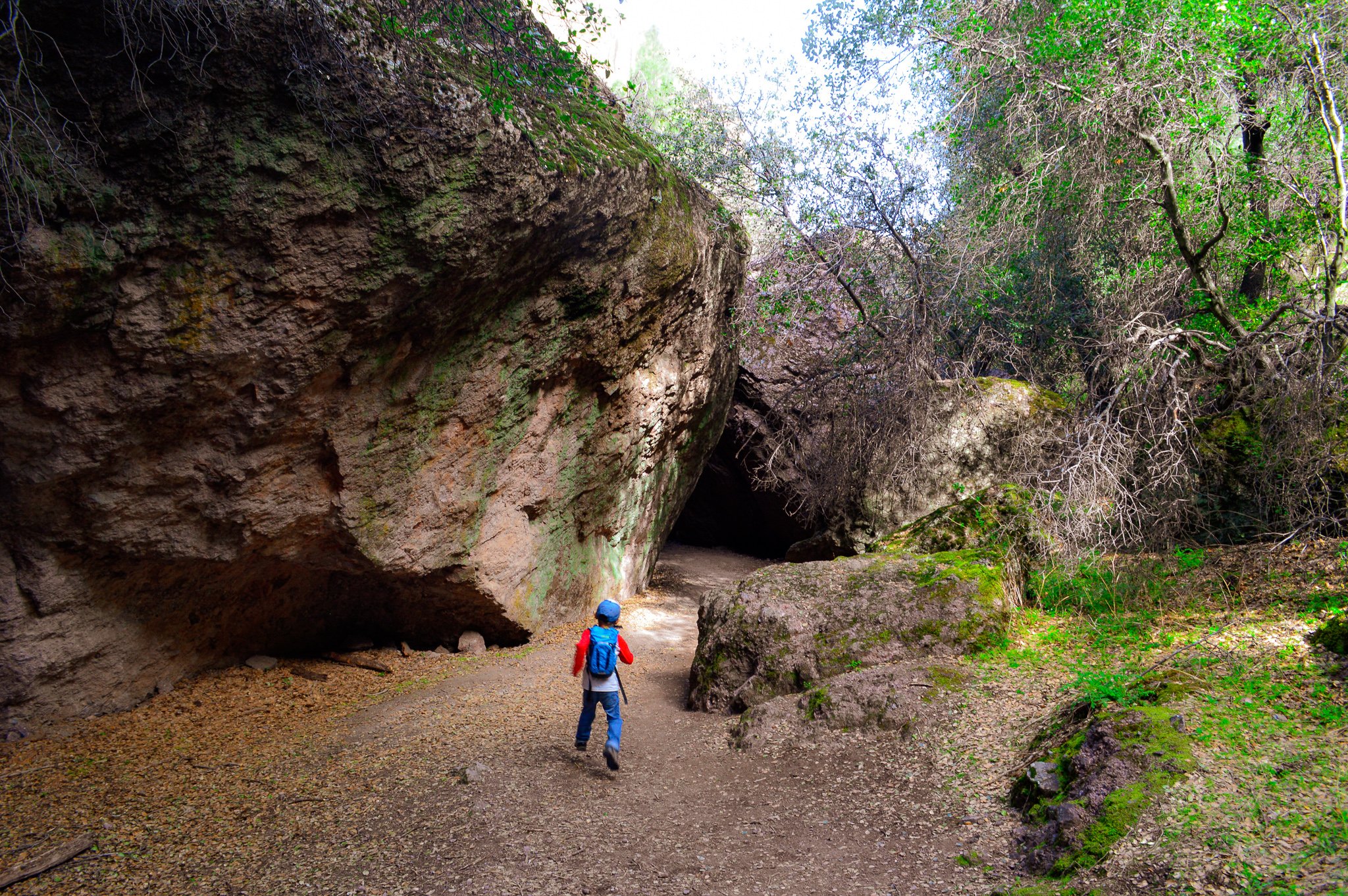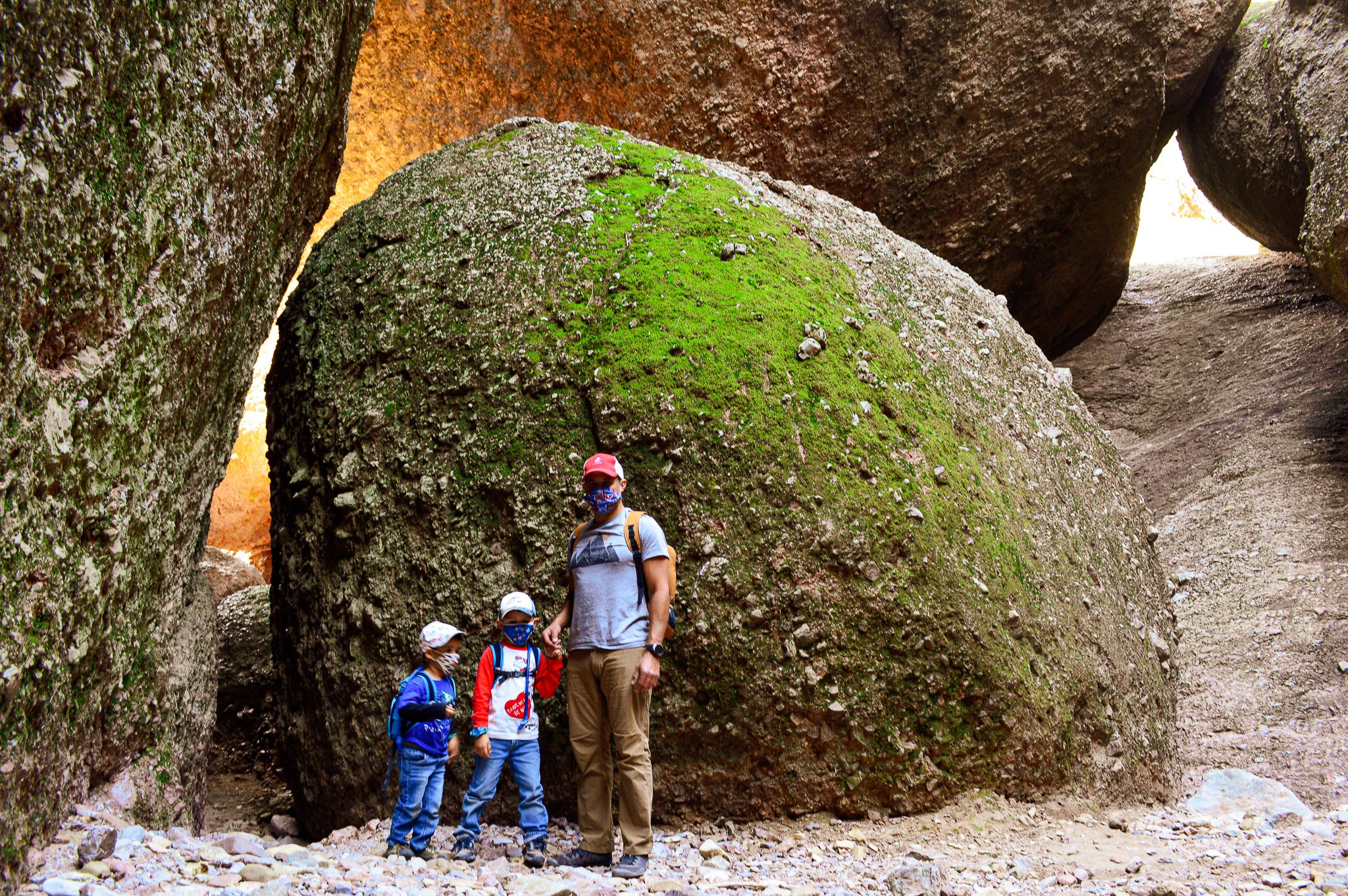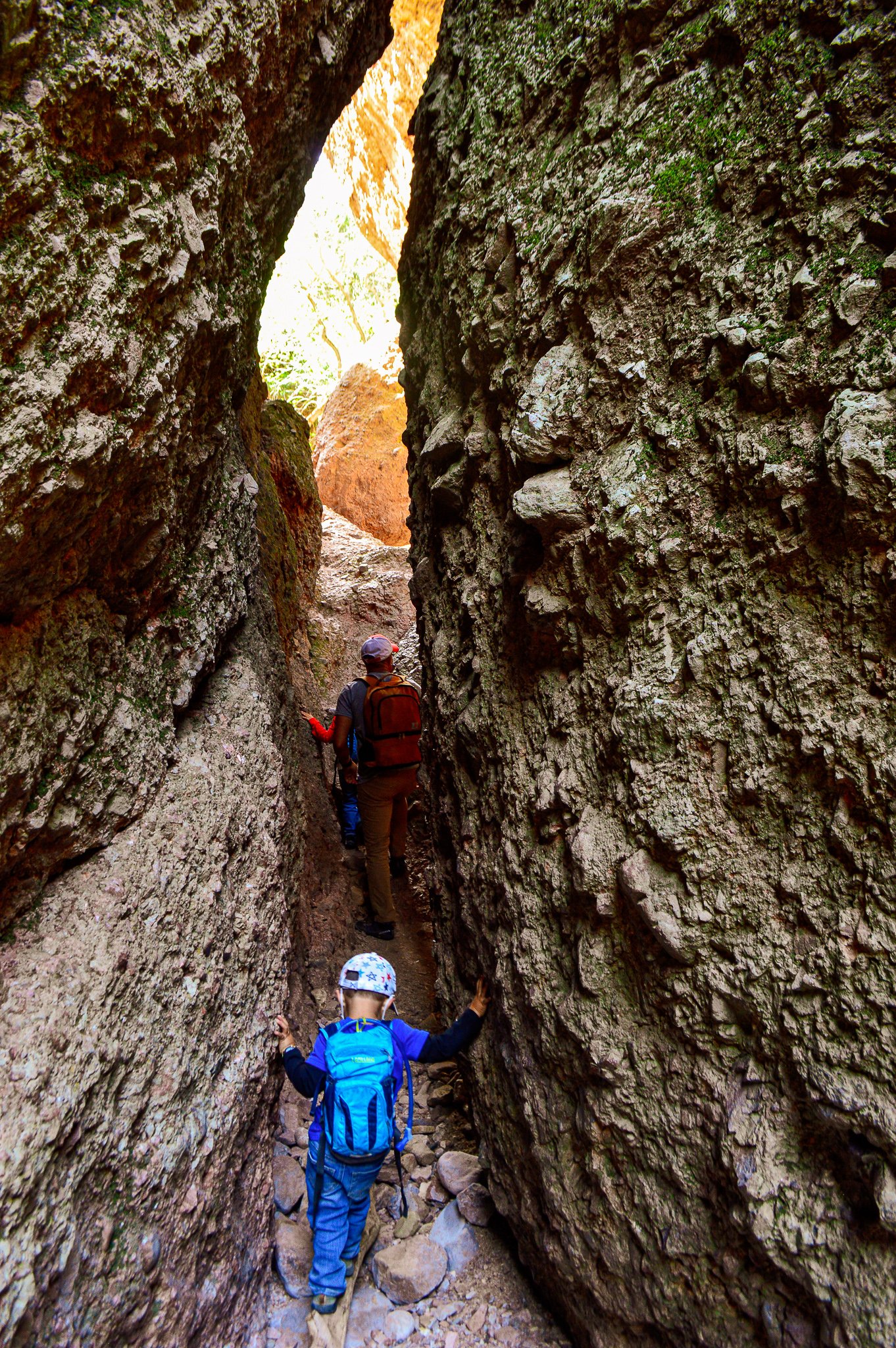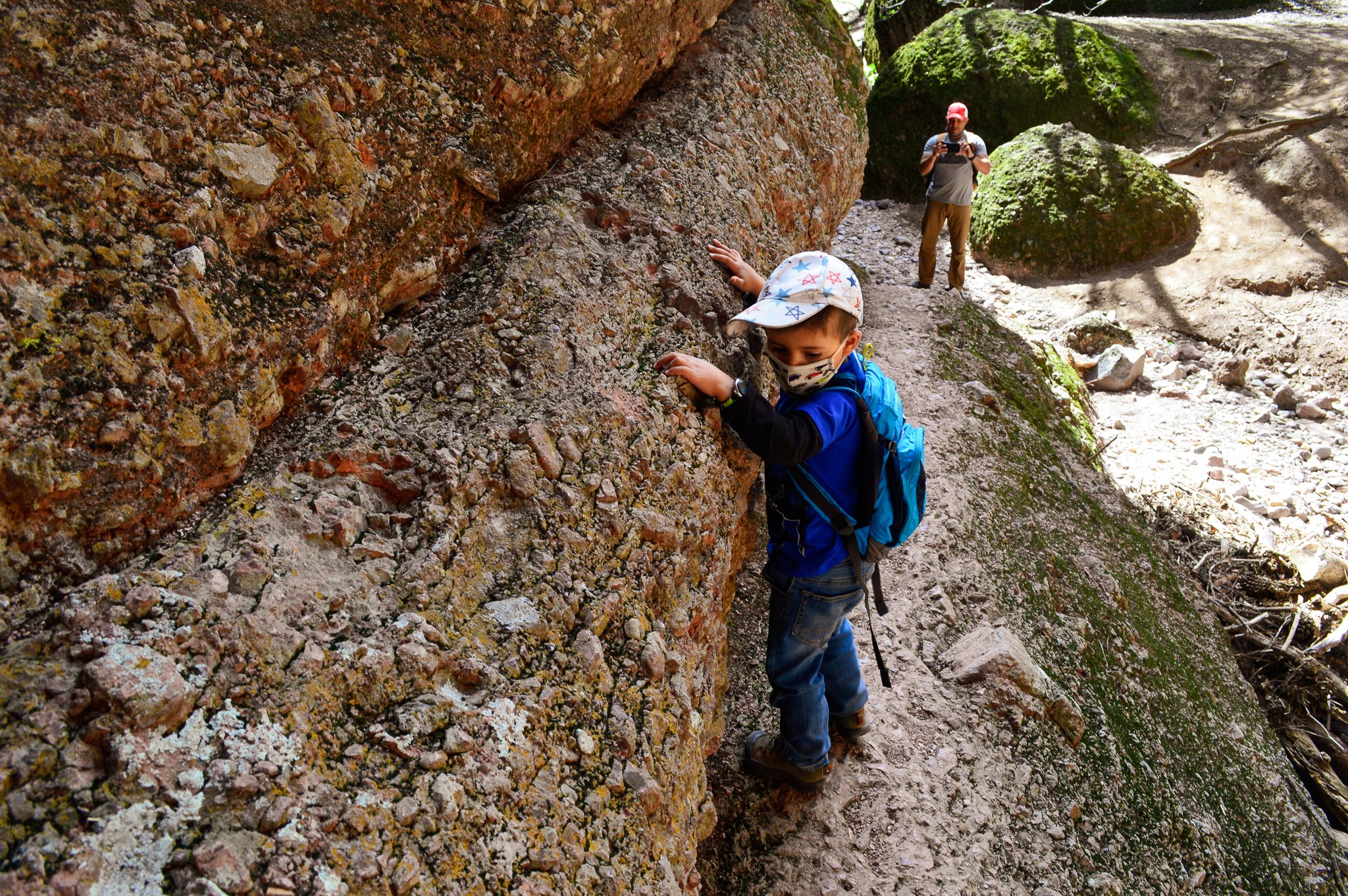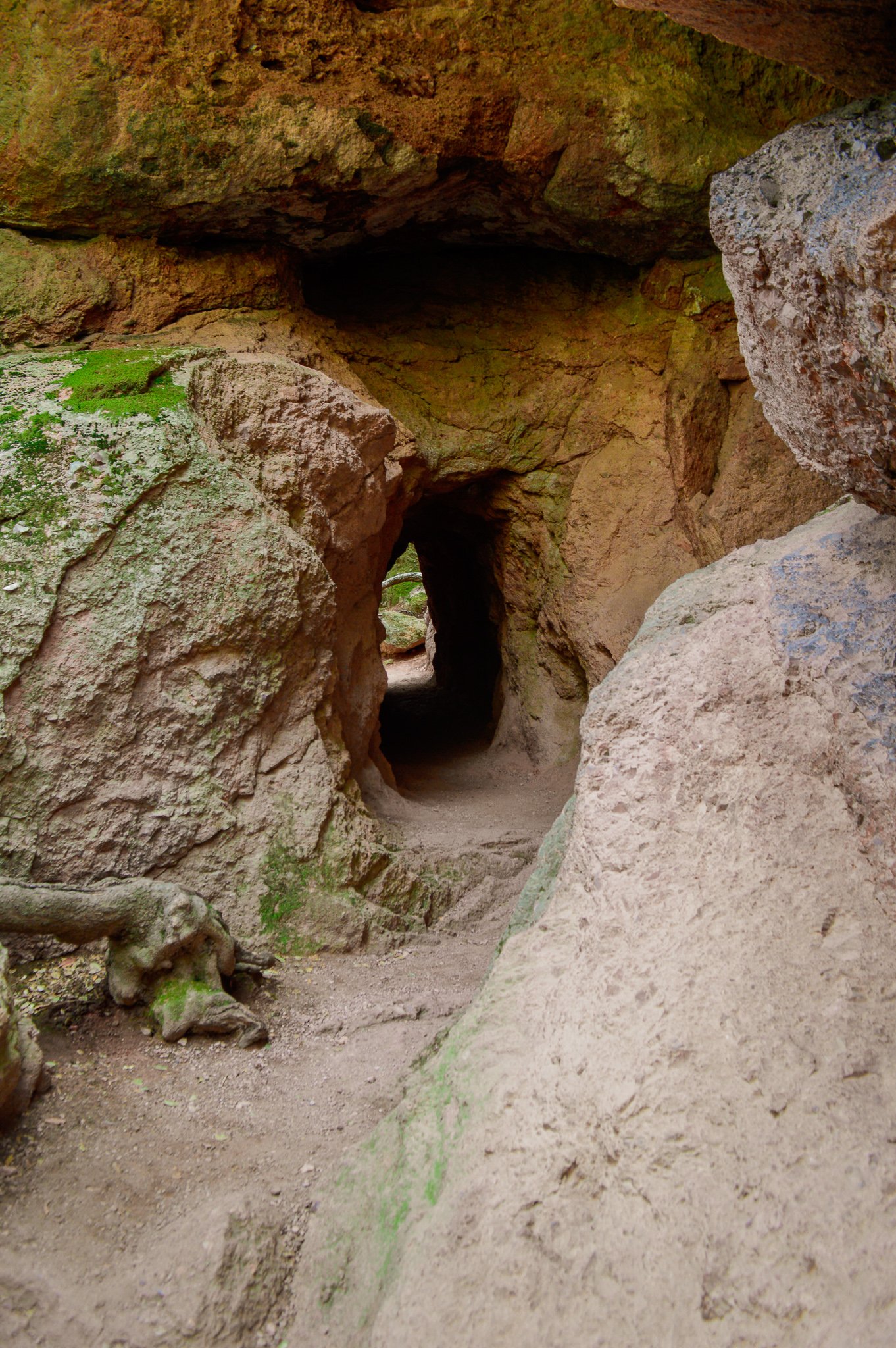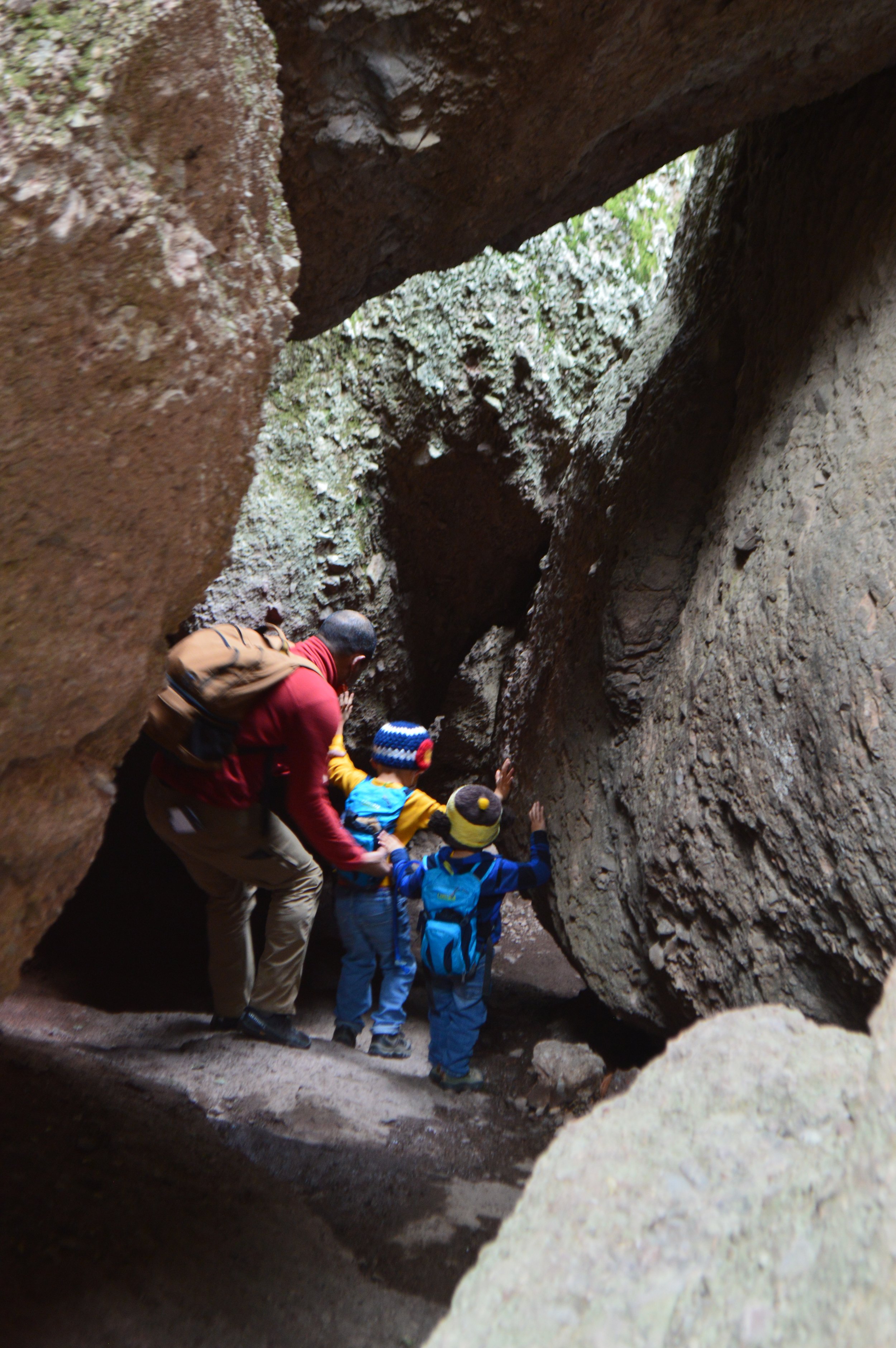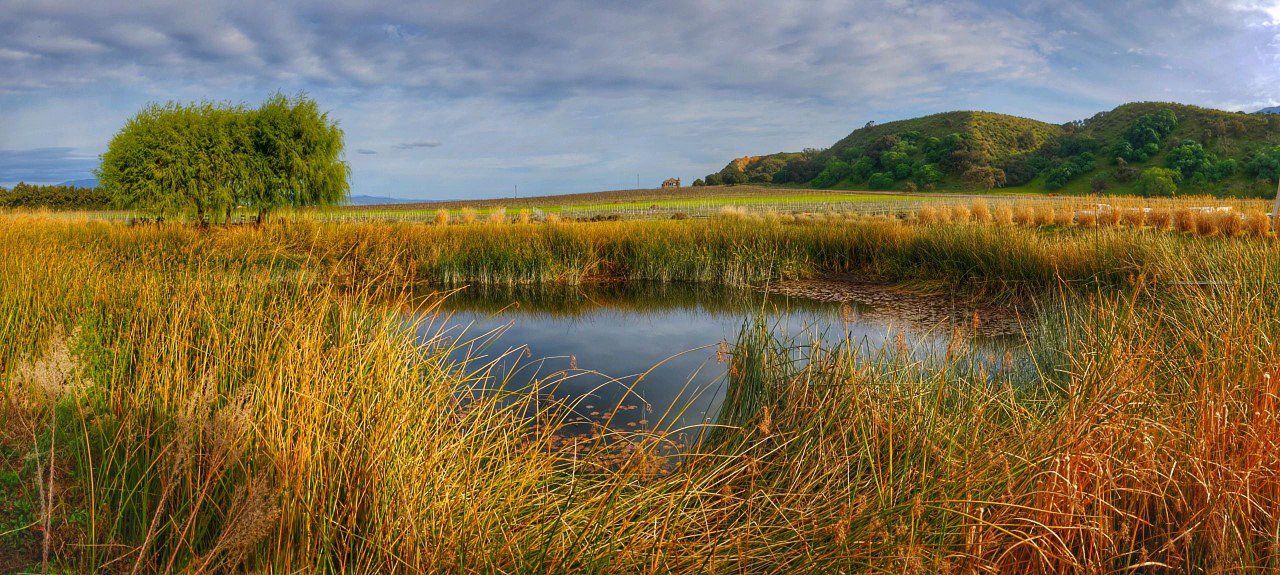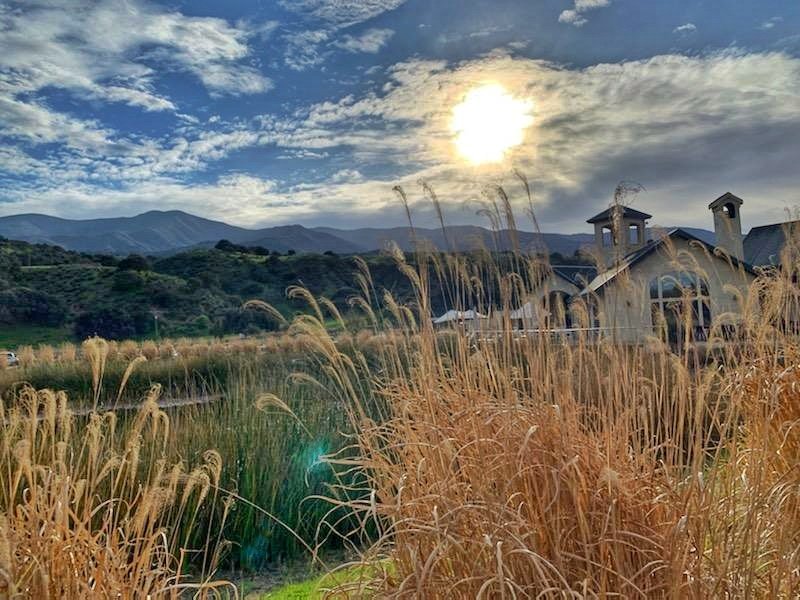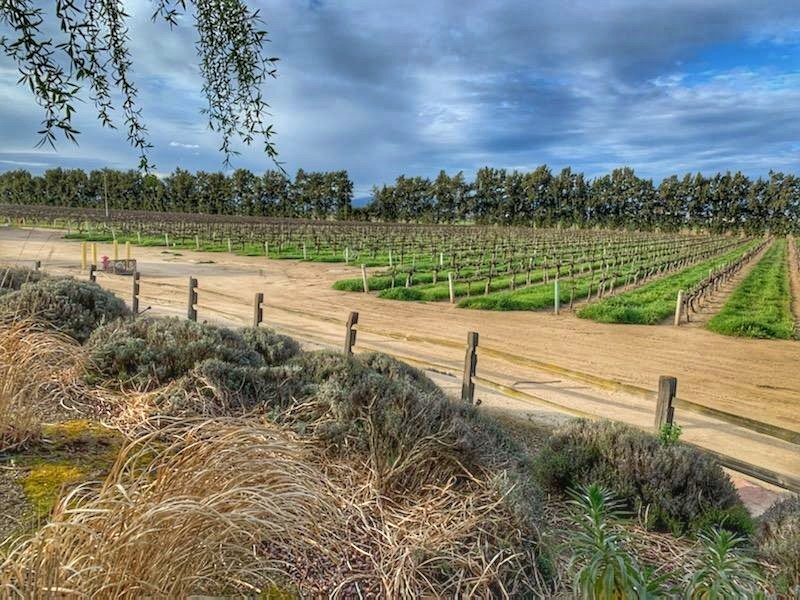Pinnacles National Park

After spending winter in the desert, this family was ready to visit some of the inner coastal mountains California is so famous for! We were lucky enough to spend a few wonderful spring weeks outside of Pinnacles National Park, a small but incredible area set in the beautiful farming (and wine!) communities of San Benito County.
Originally deemed a National Monument by President Roosevelt in 1908, and 105 years later a National Park by President Obama, this area is known for the lava spires that rise from boulder-studded canyons and rolling hills. Because the 40-mile-distant and moderating Pacific Ocean climate is blocked by the surrounding mountains, our drive into the area went abruptly from dessert to semiarid conditions comparable to the Mediterranean. The Pinnacles Rocks, from which the park takes its name, are the eroded leftovers from an extinct volcano, rising in the midst of the Gabilan Mountains between Salinas Valley to the west and Bear Valley to the east.
It is these incredible rock formations that divide the park into East and West divisions – areas that are connected only by foot trails. For this hiking family, this was a wonderful challenge and accessible way for us to fully explore the park. Finding your way up and over the High Peaks trails is the best way to get up close and personal with the beautiful pinkish brown lava rock and breccia, which forms a seven-mile-long, 2.5-mile-wide slab, rising a half mile high and covering 80 percent of this park. Most of the trails interconnect, so you can really make this a “choose your own adventure” kind of experience. For us, we found combining Juniper Canyon, Old Pinnacles Trail, Condor Gulch and High Peaks a challenging but scenic way to see the “greatest hits” of the park. As you climb up and over some of these breathtaking spires, you are surrounded by a rainbow of lichen (293 species to be exact!) in varying colors of red, green, yellow, and brown.
Our family enjoyed hiking thru rare talus caves to emerge beneath towering rock spires teaming with life. The Balconies Cave Trail/Overlook and the hike from Moses Spring to Bear Gulch Cave and eventually ending at Bear Gulch Reservoir were particularly fun for the kids to get their own chance to climb under and around giant granite boulder filled gorges that are some of the oldest rocks in the park (dated between 78-100 million years old). Be warned though, Bear Gulch is the most popular region in the park, so plan to hike early if you want to avoid the crowds, especially as the hikes to this area are through some rather tight spaces.
Bear Gulch Reservoir
For those looking for the less traveled path, the hike to summit North and South Chalone Peaks offered unobstructed views of the Gabilan Range and a worthy challenge of exposed sun and 2,000+ ft of elevation gain; in terms of distance and elevation, this is probably the most difficult hike in the park. While the vistas were enough to draw us there, these peaks are also a popular hangout for the endangered California Condor. Pinnacles NP is one of only three release sites for these truly impressive birds – there are only 488 condors left in the wild. With an average wingspan of 9.5 ft, spotting these scavengers in the wild is definitely worth every mile of uphill.
Speaking of wildlife, this park offers much to see in a small area. It may be the 6th smallest national park, but the animal life is extraordinary: 71 distinct species of butterfly, 14 species of bats, more than 160 species of birds including California condors, prairie falcons, great horned owls, golden eagles, and peregrine falcons, and enough reptiles and amphibians to make your heart skip a beat as they scurry across the path while you hike (assuming small but fast moving slimy creatures give you the heebie-jeebies, or maybe that’s just me!). Most of the park is wilderness, allowing for an incredibly diverse ecosystem of native vegetation and pollinating insects; the flowering plants provide sustenance to the highest bee diversity per square mile of any place on Earth.
As if that wasn’t enough to draw you in, the semiarid Mediterranean conditions mean wine country in California! The RV park we stayed at offered several discounts to local wineries, and the expanse of farms and wineries throughout San Benito County added to the beauty outside of the designated park boundaries. Not only does the River Road Wine Trail provide access to wineries that are somewhat hidden and tucked away, they are charming to tour and most importantly making delicious wine! Wrath Winery was by far our favorite, providing the perfect afternoon picnic spot after a long morning hike.
All in all, this area is small but mighty when it comes to natural beauty and recreational fun. At 80 miles south of San Jose, and just over an hour drive to Monterey Bay and the Carmel Valley, this park should be on any southern California road trip and offers a beautiful break from touring southern California’s wine country.



